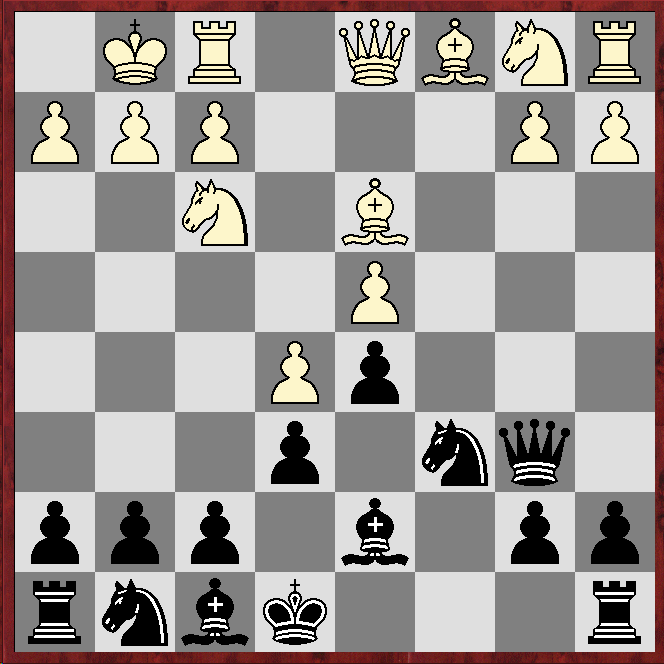It arises after the moves 1.e4 e6 2.d4 d5 3.Nc3 Nf6 4.Bg5 Be7 5.e5 Nfd7 6.h4!?
 |
| There are 6,724 examples of this position in ChessBase's 2023 Mega database |
That arises after 1.e4 e6 2.d4 d5 3.e5 c5 4.c3 Nf6 5.Nf3 Qb6 6.Bd3 cxd4 7.cxd4 Bd7 8.0-0!?
 |
| There are 4,348 examples of this position in Mega23 |
The gambit was apparently first played by Adolf Albin in 1890, and his name is sometimes appended to it, although Albin-Alekhine-Chatard is quite a mouthful.
The most popular reply in Mega23 is to decline the sacrifice with 6...a6!?
One of the points of ...a6 is that Black wants to play ...c5, but the immediate 6...c5?! runs into 7.Bxe7 Qxe7 8.Nb5.
However, Stockfish16 and Komodo14.1 come close to calling 6...a6!? a mistake, reckoning White has the upper hand (Stockfish16) or is at least slightly better (Komodo14.1) after 7.Qg4.
Accepting the gambit with 6...Bxg5 leads to very sharp play, but my opponent preferred the second-most popular method of declining, namely 6...h6!?
After 7.Bxe7 Qxe7 I continued with what is easily the commonest move in Mega23, 8.Qg4.
This scores a resounding 62%, but the engines reckon Black gets at least equality with 8...0-0.
Instead they recommend 8.f4!?, claiming a slight edge for White.
What this snapshot look at an opening suggests is that while the Alekhine-Chatard Attack is famous, the state of theory is not well-known, meaning there is plenty of scope for independent research.
No comments:
Post a Comment